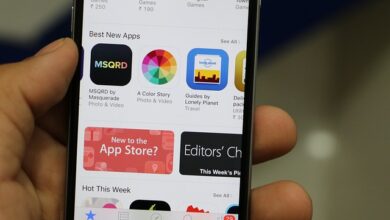
Freelancing in graphic design has become one of the most rewarding career paths in the digital age. With the growing demand for visually appealing content, businesses, startups, and individuals are increasingly seeking out skilled graphic designers to create logos, advertisements, social media content, websites, and more. However, freelancing as a graphic designer is not without its challenges. Success requires not only creativity and technical skill but also effective tools and strategic approaches to managing projects and clients.
In this article, we will explore essential tools and tips for graphic designers looking to thrive in the freelancing world. From selecting the right design software to building a strong client base, each aspect is crucial for establishing a successful and sustainable career in freelance graphic design.
1. Choosing the Right Design Tools
One of the key factors that define a freelance graphic designer’s success is the selection of tools and software. These tools enable designers to bring their visions to life with precision, creativity, and efficiency. Some of the most popular and effective design tools for freelancers include:
Adobe Creative Cloud
Adobe Creative Cloud (CC) is widely regarded as the industry standard for graphic design software. With applications such as Photoshop, Illustrator, InDesign, and After Effects, Adobe CC offers a comprehensive suite for various aspects of graphic design, from photo editing to vector graphics and motion design. Despite being on the pricier side, it is a worthwhile investment for freelance graphic designers aiming to deliver professional-quality work.
Affinity Designer
For freelancers looking for a more affordable alternative to Adobe Illustrator, Affinity Designer offers robust vector design capabilities without a subscription fee. It’s great for designing logos, illustrations, and website layouts, making it a go-to choice for many budget-conscious designers.
Sketch
Sketch is a favorite among web and UI/UX designers. It simplifies the process of designing responsive web interfaces and mobile app prototypes. It also features collaboration tools, allowing teams and clients to view and interact with design projects in real-time, making feedback loops more efficient.
Procreate
If you specialize in digital illustration, Procreate is an exceptional tool available on the iPad. It provides a highly intuitive drawing experience and a range of brushes and effects that can rival traditional media. This software is particularly favored by freelancers who focus on hand-drawn or illustrative work.
Canva
For beginners or freelancers working with simple designs, Canva is an excellent choice. Canva’s drag-and-drop interface, combined with a library of templates, makes it easy to create professional-looking designs without extensive experience. While it’s not a replacement for high-end software like Adobe Illustrator, it is a great supplementary tool for quick design tasks, social media graphics, and presentations.
Figma
Figma is another powerhouse for UI/UX designers, particularly in collaborative environments. Unlike Sketch, Figma is browser-based, which allows freelancers to work from any device and share their work easily with clients. It’s an ideal tool for web designers who need to collaborate on wireframes, prototypes, and design elements with clients or teams.
2. Organizing Your Workflows
Freelancing demands the ability to manage multiple projects simultaneously, often with varying deadlines and client expectations. Therefore, organizing your workflow is essential to maintaining productivity and meeting deadlines. Here are some tips and tools that can help:
Task Management Tools
Freelancers often juggle multiple projects, and keeping track of deadlines can be daunting. Task management platforms like Trello, Asana, and ClickUp allow you to create boards or lists for each project, set deadlines, assign priority levels, and track progress. These tools help ensure that no task falls through the cracks, especially when balancing several clients at once.
File Storage and Organization
Graphic design files, particularly high-resolution images and videos, can consume a lot of storage space. Using cloud storage solutions like Google Drive, Dropbox, or OneDrive ensures that your work is securely stored, accessible from anywhere, and easily shareable with clients. Organizing files in specific folders for each client or project will also help keep everything in order, saving you time when searching for a specific file.
Backup Solutions
Nothing is worse than losing work due to a computer crash or corrupted file. Freelancers should always back up their work regularly. External hard drives or cloud-based backup systems like Backblaze provide peace of mind, ensuring that you don’t lose critical work files.
3. Building a Strong Portfolio
One of the most critical aspects of succeeding as a freelance graphic designer is showcasing your talent through an impressive portfolio. Your portfolio is your primary tool for attracting new clients, demonstrating your design abilities, and highlighting your expertise. Here’s how to build a portfolio that stands out:
Select Your Best Work
When creating a portfolio, quality trumps quantity. Rather than showcasing every project you’ve worked on, choose the pieces that best represent your skills and align with the type of work you want to attract. If you specialize in branding, for example, include case studies that showcase logo design, typography, and visual identity systems.
Create Case Studies
Going beyond simply showing finished designs, create case studies for key projects. These should include the client’s brief, your design process, and the final outcome. Potential clients often appreciate understanding how you approach design challenges and solve problems creatively.
Update Your Portfolio Regularly
As you complete new projects, make it a habit to update your portfolio. An outdated portfolio may give potential clients the impression that you aren’t actively working or lack recent experience. Whether you maintain an online portfolio on platforms like Behance, Dribbble, or your personal website, keep it current and aligned with your evolving style and capabilities.
Online Presence
In today’s digital age, your online presence is crucial. Social media platforms such as Instagram and LinkedIn are great for sharing your work and connecting with potential clients. Additionally, maintaining a professional website that features your portfolio, services, and client testimonials can serve as a central hub for your freelancing business.
4. Managing Clients and Projects
Client management is an essential skill for freelance graphic designers. Establishing clear communication, setting expectations, and handling revisions effectively can make or break your freelance career. Here are some strategies to help:
Set Clear Expectations
When working with clients, be sure to discuss project scope, timelines, and deliverables upfront. This helps prevent misunderstandings or scope creep, where the project’s scope expands beyond the initial agreement without additional compensation.
Create Contracts
Having a written contract is essential in freelance work. It outlines the terms of your agreement with the client, including the scope of work, payment schedule, deadlines, and intellectual property rights. Tools like HelloSign or Docusign make it easy to create, send, and sign contracts digitally.
Invoicing and Payments
Ensure that you have a solid invoicing system in place. Tools like FreshBooks, QuickBooks, or PayPal allow you to create professional invoices, track payments, and manage your finances. Always specify your payment terms in your contract, such as requiring a deposit upfront and the remaining balance upon project completion.
Handling Revisions
Designers often face multiple rounds of feedback and revisions. To manage this effectively, establish a clear number of revisions included in your contract. If a client requests more revisions than agreed upon, inform them that additional fees may apply.
5. Pricing Your Services
One of the most challenging aspects of freelancing is determining how to price your services. You want to strike a balance between being competitive and ensuring that you are compensated fairly for your time and expertise. Consider the following pricing models:
Hourly Rates
Charging by the hour is a common pricing model for freelance designers. It’s essential to calculate an hourly rate that covers your expenses, taxes, and desired profit. While this method works well for projects with unclear scopes, it may lead to unpredictability for both you and the client.
Project-Based Pricing
Many freelancers prefer to charge per project. This method allows both you and the client to agree on a set price upfront. It’s important to carefully estimate the time and effort each project will require to avoid underpricing your work.
Retainer Agreements
Some freelance designers opt for retainer agreements, where a client pays a monthly fee for ongoing design services. This model provides more financial stability and allows you to build long-term relationships with clients.
6. Continuous Learning and Growth
The design world is constantly evolving, and staying updated with the latest trends, software updates, and techniques is crucial for long-term success. Engage in continuous learning by:
- Attending webinars, workshops, or conferences related to graphic design.
- Taking online courses through platforms like Udemy, Skillshare, or Coursera to refine your skills.
- Reading design blogs, following industry leaders, and participating in design communities to stay inspired.




